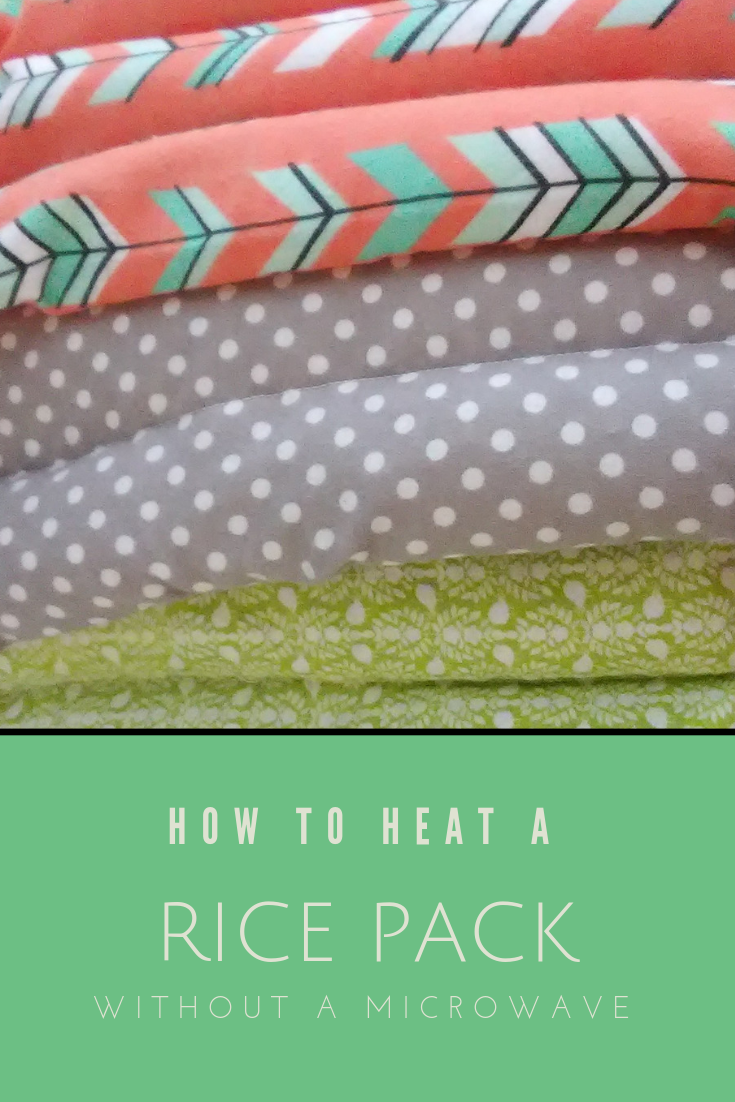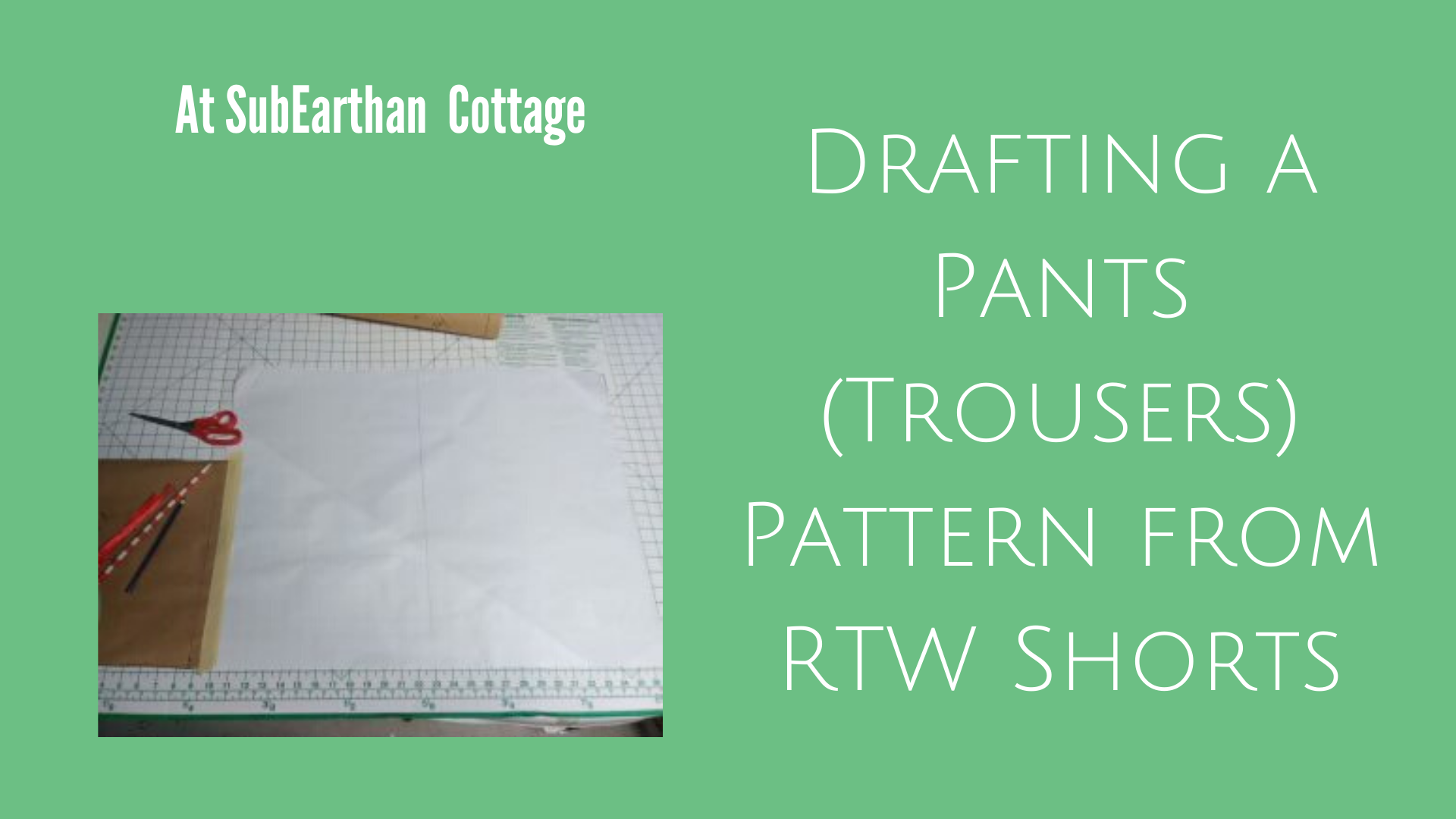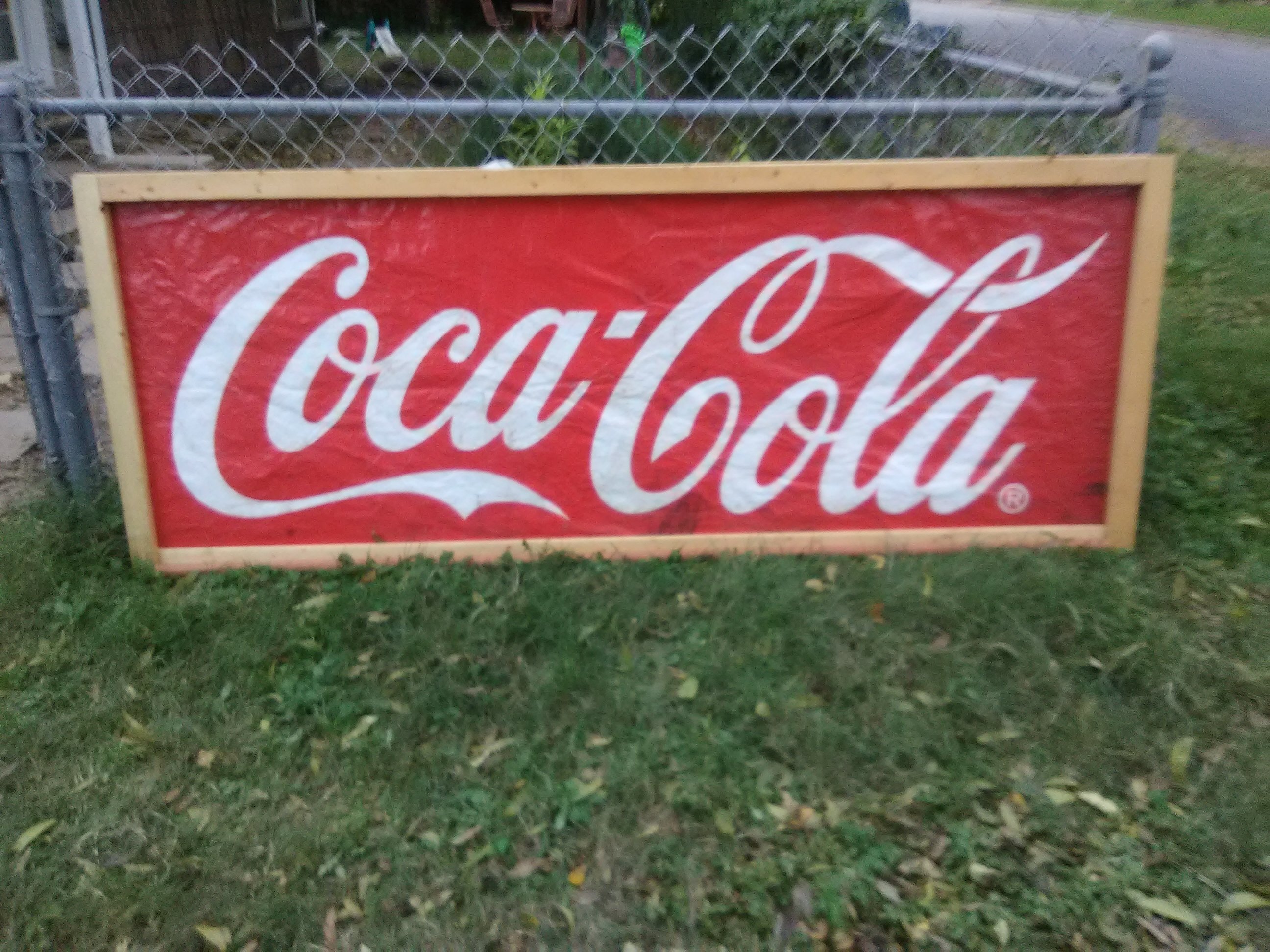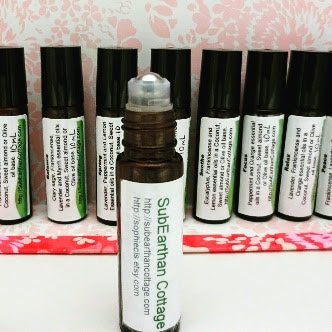
Hot rice packs are wonderful tools for easing muscle aches, cramps, and just comforting to use in cold weather. I prefer using a rice pack to an electric heating pad because you’re not tied to an electrical outlet.
A few years ago, though, I got rid of our microwave. I have some concerns about whether they are healthy, and we rarely used it anyway. Even if the potential health risks are exaggerated or non-existent, I don’t like having things that don’t get used taking up space. At the time, it was summer in Texas, I didn’t really miss my rice packs. Now that it’s cold, I wanted to find a way to heat them without caving and getting another microwave.
Please be cautious. I’ve seen some things that say anything other than a microwave is a fire-risk, so if you try to heat a rice pack in an oven, please never leave it unattended and use extreme caution. All appliances are different, so what works with mine may not work with yours.

Basic oven method
When researching, I found many people say to use an oven set to about 200 degrees Fahrenheit for thirty minutes. They also said to put the rice pack on a metal tray or roasting pan, and to have a pan or oven-safe dish of water alongside it to keep it from getting too dry.
My method
I was a little concerned that I may forget about it, and my oven doesn’t have a window so keeping an eye on it would be difficult. I do have a counter-top convection oven, so that is what use. Because the door is glass, I can see in and keep an eye on things. It also has a timer that turns the unit off once time is up, so even if I get distracted I don’t have to worry about it over-heating.
I always place the rice pack on a tray and put a dish of water in with it as others have suggested. Any rice packs I heat in the oven are made with 100% cotton fabric and thread. Synthetics melt easier and burn faster, whereas cotton can withstand a pretty high heat and burns slower, so cotton seems like a safer choice.
I started with 200 degrees Fahrenheit for 20-30 minutes. It worked, but I needed it hotter. I upped it to 300-325 degrees for 15-20 minutes. At that temperature, sometimes I have to let it cool for a minute or wrap it in a towel, but it works better for me than the lower temperature. I tend to push the limit with heat, though, so 200 degrees for thirty minutes is probably plenty for most.
Probably safer method
One other method I’ve seen is to preheat the oven to 350 degrees Fahrenheit, TURN IT OFF, and place the rice pack (on a tray with heatproof dish of water next to it) in the preheated oven. I haven’t tried this yet, but having the oven hot but turned off seems like it would minimize any risk of the rice pack overheating and burning. If I didn’t have the convection oven, I would probably use this method.
The standard microwave method
Using a microwave is still the recommended method. To heat rice packs in the microwave, warm it in the microwave in 15 second intervals until you reach the desired temperature. Some people recommend placing a cup of water in the microwave as well.
Basic safety
Whether you use a microwave or an oven, be mindful that they can vary in power. ALWAYS test the temperature of the rice pack before using and never leave the microwave or oven unattended while heating. You should never use heat packs on individuals who are unable to let you know if it feels too warm on their skin.
Lavender rice packs at SubEarthan Cottage
SubEarthan Cottage now offers large 100% cotton flannel rice packs. These are filled with a blend of rice and lavender buds for a pleasant hint of lavender. I sewed channels in the flannel to help keep the rice evenly distributed. They can be heated as described above, or kept in the freezer to use cold. Find all of my rice packs here.

Like this post? To make sure you don’t miss out on future posts, sign up for my newsletter.



























